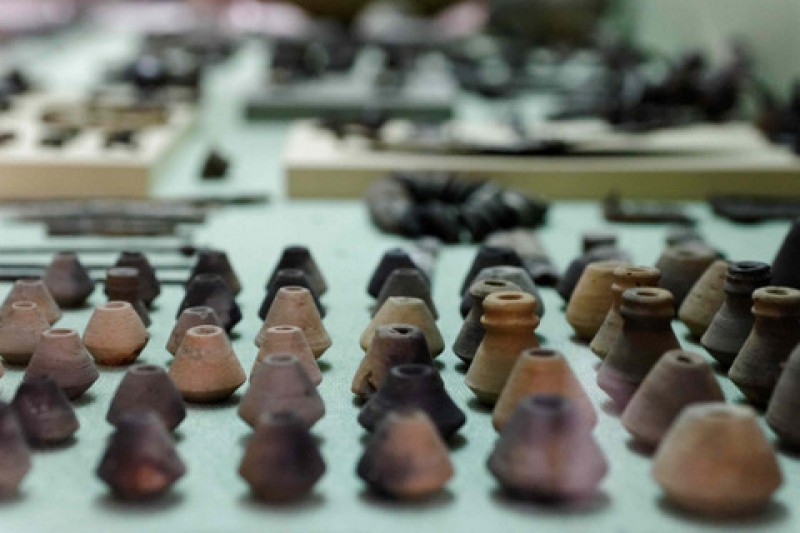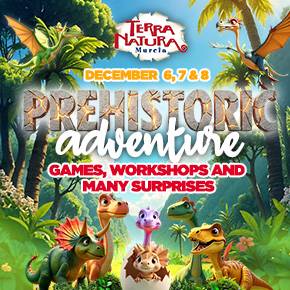

Guidelines for submitting articles to Mar Menor Golf Resort Today
Hello, and thank you for choosing Mar Menor Golf ResortToday.com to publicise your organisation’s info or event.
Mar Menor Golf Resort Today is a website set up by Murcia Today specifically for residents of the urbanisation in Southwest Murcia, providing news and information on what’s happening in the local area, which is the largest English-speaking expat area in the Region of Murcia.
When submitting text to be included on Mar Menor Golf Resort Today, please abide by the following guidelines so we can upload your article as swiftly as possible:
Send an email to editor@spaintodayonline.com or contact@murciatoday.com
Attach the information in a Word Document or Google Doc
Include all relevant points, including:
Who is the organisation running the event?
Where is it happening?
When?
How much does it cost?
Is it necessary to book beforehand, or can people just show up on the day?
…but try not to exceed 300 words
Also attach a photo to illustrate your article, no more than 100kb

The Iberians 750 BC to 1st Century BC
Definition of Iberian culture in Murcia, 750 BC to around 1st Century BC
Traces of the Iberian culture are found time and time again across the Region of Murcia, yet this culture is something that´s quite difficult to define in narrow terms as it´s not a culture which featured on the UK mainland, so is unfamiliar to foreigners as an identifiable group of peoples and comprised a series of different tribes and settlements across a wide area with definable differences according to geographical location.
In very general terms the "Iberians" encompass the range of peoples who inhabited the Mediterranean coastline between Upper Andalucía and the River Hérault, in the South of France, from the 8th to the 1st century BC. This encompassed modern day Andalucía, Albacete, Murcia, Valencia, Catalunya and some parts of Aragón.
The term Iberian almost certainly derives from the river "Iber" or "Iberus", which is now the Ebro
It was the Greeks who gave the name of “Iberians” to the inhabitants of the peninsula, which in turn was known as Iberia. At the time these people spoke Iberian, the written version of which consists of syllabic and alphabetical symbols and has been found at the archaeological sites of El Cigarralejo (Mula) and La Serreta (Cieza).
Technologically this civilization belongs to the Iron Age in what is generally referred to as the Second Iron Age, i.e. from 600 BC approximately until the birth of Christ and genetically they are not traceable as an isolated population, so the term Iberians refers to the indigenous peoples who lived in the above-mentioned area during this period of time.
Their development as a culture is similar to those of other contemporary cultures in western Europe, including the Celts in the interior of modern day mainland Spain, which you´ll find frequently referred to as the Iberian peninsula, and the Gauls, who occupied much of France..
Relations with the Phoenicians and the Greeks
During this 600 year period the Iberian people can be visibly seen to absorb technology through their commercial and colonial contacts with other cultures which traded along the Mediterranean; the Phoenicians, the Greeks and, later on, the Carthaginians and the Romans in the final stages of Iberian culture.
They traded for trade goods from all of the colonists, exchanging them for raw materials, and among the items found on archaeological sites, mainly in burials, the most important group is luxury crockery, mainly from Greece, especially the city of Athens, during the 5th and 4th centuries BC. Later in the history of Iberian culture, these luxury or semi-luxury items were bought from Italy or the Greek colonies in the north-east of the peninsula (Ampurias and Rosas).Jewellery also frequently reflects the social status of the deceased, while domestic and agricultural implements show the influence of external trade contact.
It was never in their character to unite and form a single Iberian state; indeed the individual tribes were often engaged in power conflicts and territorial disputes, although they are generally classified as being one group of people by strong resemblances in their habits, religion, trade and languages.
Timeline of the Iberians in Murcia
In global terms, the timeline of Iberian society throughout the territorial area already described can be said to 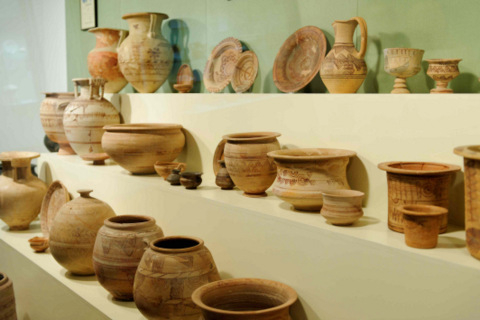 last from the 8th to the 1st century BC, when the Roman Empire extended into the peninsula. Within this timescale four periods are normally identified:
last from the 8th to the 1st century BC, when the Roman Empire extended into the peninsula. Within this timescale four periods are normally identified:
Pre-Iberic formative period 750-550BC
The Ancient Iberian Phase, approximately 550-495 BC,
The Middle Iberian Phase, approximately 495-295 BC, and
The Later Iberian Phase, approximately 295 to 1st century BC
By this point in time, the Emperor Augustus had come to power and the unique identity of the Iberians had become blurred with that of the occupying Romans. The Iberian way of life was very much assimilated into the newly arrived Roman society, apart perhaps from the language in some areas and the use of traditional Iberian crockery. At the same time their hilltop settlements also fell into disuse, as did their large burial sites, their pottery-making techniques and their general cultural identity, and after the 1st century BC, they ceased to exist as a definable independent population.
Structure of Iberian Society.
Monarchy and aristocracy
Iberian society was hierarchical in structure, and was ruled over by a local king or chieftain. Underneath him in the social structure were the warriors and priests, who were effectively the ruling classes: the former were awarded their privileges as recompense for their feats in combat, while the latter were revered for their influence over the gods of nature.
At the top of the pyramid was a pseudo-divine monarchy. Over time, starting in the 5th century BC, it evolved into a kind of princely aristocracy, which generally held power locally or regionally.
This does not mean that the ruling élite were a tiny minority, because the lack of real political unity among the different Iberian areas and settlements meant that there were as many aristocratic "élites" as there were independent settlements.
The existence of these local aristocracies has been demonstrated by the material relics found in archaeological sites, mainly in the grave goods and funeral monuments found at burial sites. However, within the settlements themselves this social differentiation is nowhere near as clear, since within the towns there are normally neither public buildings which could be said to represent the power of the aristocracy nor larger, palatial houses which tangibly demonstrate any individual political or economic superiority.
Political organization and economic resources
This collection of peoples never fell under just one common political administration, but were organized 
Among the main groups of Iberians in the Region of Murcia were the Mastiani and the Bastetani, both of which belonged to the Tartessos confederation.
The influence of the Mastiani spread all along the coast of modern-day Murcia and Andalucía, and their capital city, Mastia, was the forerunner of Cartagena. From here they created an important trading network, based on the mineral wealth of the area and the development of the salted fish and esparto grass industries. The city of Mastiawas protected by a sturdy wall, and was surrounded by the five hills of Cartagena, and on top of this the sea and the lagoon afforded additional protection on the eastern and western sides of the city respectively.
The cities of the Mastiani were mostly located on raised ground which made them easier to defend, and were walled. They were governed according to written laws which were passed by the Council of Elders, over which the local monarch presided. The city of Basti(modern-day Baza) was one of these cities, and had close relations with Mastia, although the Bastiani occupied the inland area of the south-eastern part of the Iberian peninsula. The economy of the Bastiani was based on agriculture, mining and trade.
Different degrees of wealth
The key archaeological findings for understanding the real degrees of wealth enjoyed (or otherwise) by individuals and families within clans are the grave goods, i.e. the articles with which bodies were buried to 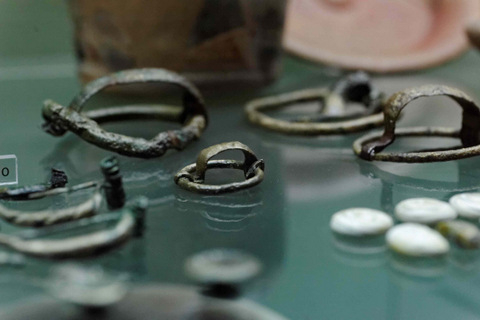 accompany them to the next world or as offerings to the gods. The most important points are firstly the quantity and quality of the items deposited in graves or tombs, and secondly the time and effort used in the construction of the funereal megaliths (equivalent to modern gravestones). In both respects there is a wide degree of differentiation.
accompany them to the next world or as offerings to the gods. The most important points are firstly the quantity and quality of the items deposited in graves or tombs, and secondly the time and effort used in the construction of the funereal megaliths (equivalent to modern gravestones). In both respects there is a wide degree of differentiation.
The most noticeable differences date from the 4th century BC; in almost all the sites analyzed it has been found that there are few men and women who accumulated many items of value, such as weapons, luxury ceramics, jewels and various types of glass beads, and above these graves there are sculptural elements crowning the tomb.
The majority of the other graves, on the other hand, contain no more than four or five objects. It´s possible to identify a clear social structure through the analysis of grave goods, with lower-middle, middle and upper-middle levels.
As the centuries passed it can be observed that there is a smaller difference between the richest graves and tombs and the average level of wealth, especially in the last two centuries before the birth of Christ. At the same time, the sculpted elements of tombstones also disappeared. The inference is that in this period prior to the disappearance of Iberian culture, when it was diluted by the introduction of Romanisation, the social structure of Iberian towns may well have continued to be aristocratic, but the organic social cohesion must have been far greater than in previous centuries.
Iberian Settlements
The truth of the matter is that Iberian settlements were not towns as we understand them. They remained 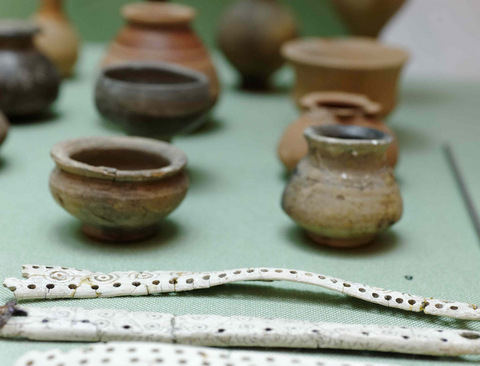 mere "settlements", rather than becoming cities as we might describe Rome or Greece. Their size varied between one hectare and various hectares, but there is no sign of the public spaces and buildings which characterize the larger towns of other cultures, or more opulent buildings to house the local aristocracy.
mere "settlements", rather than becoming cities as we might describe Rome or Greece. Their size varied between one hectare and various hectares, but there is no sign of the public spaces and buildings which characterize the larger towns of other cultures, or more opulent buildings to house the local aristocracy.
Nor has evidence been found of large squares or any grasping of the concept of town planning. Houses were adapted to the topography of the terrain on which they were built, leaning on one another, grouped into small irregular blocks, and surrounded by narrow, winding alleys which existed only to ensure that each dwelling was accessible. Hardly any instances have been found of straight, organized streets or alleys.
As a general rule the settlements were located high up, dominating the surrounding countryside and defended by a wall made from stone and adobe.
Dwellings
Inside the home, the vast majority of houses consisted of a single room measuring about 7m x 4m or 8m x 3m, to name a couple of the most common examples. The floor of the house was covered with stone, under  which was a four-or five-course foundation. On top of this were built the walls, normally using adobe. The waterproof roof was fashioned from reeds, mud and slabs of stone in the corners to avoid it being removed by high winds. The walls were whitened with plaster.
which was a four-or five-course foundation. On top of this were built the walls, normally using adobe. The waterproof roof was fashioned from reeds, mud and slabs of stone in the corners to avoid it being removed by high winds. The walls were whitened with plaster.
Sometimes the room was divided into two by a low adobe partition which could also be used for keeping crockery and other household items, and when this was the case one of the two areas would be used as the sleeping quarters while the larger half was the venue for the handicrafts and manufacturing activity of the household. These could include textiles, or even small cottage industries where, next to the home, was a small open-air workshop for ironwork and other manufacturing activity.
Fortified settlements on higher ground
Normally the settlements of the Iberians were on higher ground: in other words, on top of a hill or a mountain. Access to these was not always easy.
The settlement was always fortified, surrounded by a defensive wall, which at times was extremely thick and high, which shows that the Iberians were acutely aware of the importance of protecting their settlements. Due to the fact that at no point in their history was a sizeable political union formed, governing a large area, there were always threats close at hand, and the concept of defensive fortification does not appear to have changed between the 5th and 2nd centuries BC.
As a rule, the large oppida, or fortified settlements, were located in places where they overlooked an important communications route, which could be either a road or a river, connecting the settlement to some source of mining wealth. A good example is the Sierra Morena route, which ran from the Mediterranean coast of Murcia and Alicante across the River Segura and its tributaries. The area around the settlement was devoted to the subsistence farming and local economy needed to support the population.
The area controlled by even a large settlement was no more than a typical municipality might occupy today, with two or three smaller settlements depending on the largest, and a series of farms or smallholdings next to the land they used. This was the case whether the agricultural activity involved fruit trees, cattle or the extensive growing of cereal crops. If there was an immediate threat of danger, people from the outlying farms took refuge inside the nearest fortified settlement.
Iberian Sanctuaries and burial grounds
Think of an Iberian settlement as having three clearly defined areas, the residential settlement, a burial ground and a sanctuary.
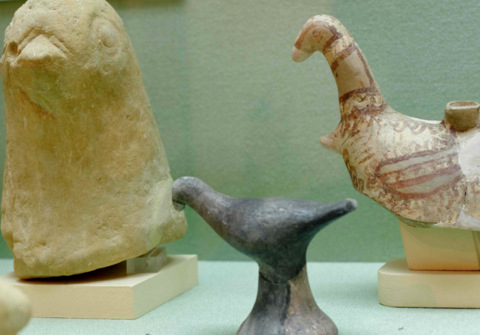 The sanctuaries were also placed in areas near the settlements, but these centres of religion, which in any case were not very common, were not defended by walls, and were directly related to the elements of Mother Nature: for example, small caves, shelters or even cracks in the rocks were sometimes used to make offerings to the gods, in the shape of votives in bronze, terracotta or stone. These are called ex-votos and there are dozens of them in museums across the Region, in many shapes. The picture shows some recovered from La luz in Murcia in the shape of horses.
The sanctuaries were also placed in areas near the settlements, but these centres of religion, which in any case were not very common, were not defended by walls, and were directly related to the elements of Mother Nature: for example, small caves, shelters or even cracks in the rocks were sometimes used to make offerings to the gods, in the shape of votives in bronze, terracotta or stone. These are called ex-votos and there are dozens of them in museums across the Region, in many shapes. The picture shows some recovered from La luz in Murcia in the shape of horses.
The votives were an attempt on the part of the Iberians to bind themselves to the gods and the forces of Nature. Only at the end of the Iberian period, just after the end of the Second Punic War, did some monumental centres of religion appear, with fixed and tangible architecture, man made sanctuaries which perhaps were an attempt to emulate the temples built by other cultures for their religions.These are most notable at El Cigarralejo in Mula, and La Luz in Murcia.
The burial grounds were always located close to the residential areas, in areas which were probably marked off by a small fence or stone wall. But there is no evidence to suggest that they were surrounded by high walls or fences to defend them from possible attacks or other damage.
Large Iberian settlements in the Region of Murcia
There are three places in the Region of Murcia which we know to have been large Iberian enclaves of the settlement - burial ground - sanctuary type, and they are among the most important in the whole of the area once populated by them.
The first of these is the complex of Santa Catalina del Monte in Verdolay (Murcia), where the settlement is on the hill of the same name, the great burial ground of the Cabecico del Tesoro is nearby, and the sanctuary of Señora de La Luz about 500 yards away from the centre of the village.
This area is now the site of the La Luz visitor centre, and is close to the Sanctuary of the Fuensanta on the outskirts of Murcia.
The second is the El Cigarralejo complex in Mula, where the settlement is on a hill which overlooks the burial ground of the same name and the sanctuary is on a rocky crest about 300 yards to the north-west, just above the burial ground.
The third site is the Coimbra del Barranco Ancho in Jumilla, where the settlement itself is next to the Sierra de Santa Ana, and a group of three cremation sites (known as El Poblado, de la Senda and Oeste-Barranco) has been found to the east. A sanctuary has been found on the crest of a hill about a kilometer to the east of the residential area.
Another large Iberian sanctuary has been found in the Region at La Encarnación (in Caravaca de la Cruz). This sanctuary and the one at Nuestra Señora de la Luz were monumentalised after the Second Punic War, when they were transformed into religious buildings (a temple and a small chapel, respectively). This signaled the end of the traditional Iberian concept of a place of worship as a small structure closely bound to nature.
Cremation
Little is known about Iberian burial rites and ceremonies, as there is no documentary written evidence to detail the cults, or practices, but it does appear that their worship involved invocations to ask for favours, or give thanks, and, as their activity was agriculturally based, appears to be directe towards natural deities of some sort. On the basis of the excavations carried out in Iberian burial grounds, we know that the burial practices consisted of cremation outside the tomb on a wooden pyre (or "ustrina"), where the corpse was placed fully dressed with ornaments, personal effects and weapons. The temperature on these funeral pyres could reach between 650ºC and 850ºC.
Depositing the ashes and grave goods
The burnt remains and ashes were then moved, still warm, to the burial cavity, and placed there either directly 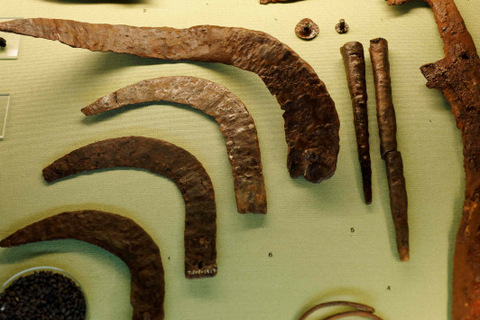 or within an urn. The cavity was a small square or oval-shaped hole about 1.5 metres long, dug out of the floor of the burial ground. Sometimes a whitish plaster coating was added to the walls of the cavity.
or within an urn. The cavity was a small square or oval-shaped hole about 1.5 metres long, dug out of the floor of the burial ground. Sometimes a whitish plaster coating was added to the walls of the cavity.
On sites such as El Cigarralejo in Mula, the ashes and grave goods were often placed inside a ceramic urn before being covered with earth and stones.
In the cavity were also placed a series of objects, which might have belonged to the deceased or may have been offerings from relations and other citizens, for the deceased to use in the next world. These are what we call the "grave goods and many have been found within the Region of Murcia.
It is thanks to these material offerings that we can deduce up to a point who is buried in a tomb, that is to say, whether it is a man, a woman or a double tomb, and what his/her profession may have been. It is also possible to make a guess on peoples social status depending on the quantity of the grave goods. At El Cigarralejo there is documented evidence of graves with two or more adults inside, and others with an adult and a child. The child had not been cremated, as the Iberians did not cremate the bodies of children under two years old.
Other offerings
Together with the grave goods, food was often placed in the grave, although the funeral banquet in honour of the deceased might not have actually taken place in the burial ground. These offerings of food were burnt "in situ" and the living never ate them. Among the food found are cereals, grapes, figs, pomegranates, and the bones of birds, chickens, pigs and lambs. There have also been findings of fabrics (esparto, linen and wool) and cups which contained perfume - unfortunately only the containers remain.
Finally the tomb was filled with earth and, on occasions, was covered by a cuadrangular stone structure, or sepulcher. The wealth of the grave goods was not always a reflection of the size of this structure. There were various ceremonies in honour of the deceased, such as libations, processions, and wrestling matches, and these ceremonies were held especially on the death of a chief or local leader.
Daily Life for Iberian populations
Agriculture
Without any doubt agriculture was one of the most important economic activities of the Iberians, as is evidenced by the plant remains found at the different archaeological sites. Analysis of pollen seeds and bones also confirms the Iberians agricultural activities.
Cereals and fruit trees
Cereal crops such as wheat and barley were one of the main food sources of the Iberians, although grapes (for wine production) and olives (from which the oil was extracted) should not be forgotten. Olive oil was used not only for the preparation of food, but also as fuel for the lamps which provided light inside peoples homes. The Greeks and Phoenicians introduced viticulture to the peninsula and taught the natives how to make grafts onto the native wild olive trees in order to make them fruitful. Fruit trees and cereal crops usually formed a green belt around towns and villages.
Agricultural technology and techniques
Agricultural work was normally carried out by men with the help of draught animals such as mules and donkeys. This we know because the animals are depicted at work in statues as well as in the decorative paintings on some articles of ceramics. There is also a scene of a man ploughing the land with the aid of two oxen.
Horses were also a prized possession and appear frequently in Iberian art and in religious offerings, the ex-votos found in sanctuaries, although their use appears to have been limited to the elite and wealthy, as well as the warrior classes, few of those engaged in agriculture being able to afford such a luxury item.
The use of iron in tools and agricultural items made it possible to make tools for agriculture, such as ploughs, scythes, hoes and clippers, all of which have been found in sites like El Cigarralejo (in Mula). Here the rivets and studs which supported the wooden handles of the ironwork have also been found.This widespread use of iron made it possible for the Iberian to rise above the level of subsistence farming and produce more crops than they needed for their own use, thus creating a mechanism for trade.
The gathering of wild fruits such as figs, acorns, nuts, almonds, dates and pomegranates also played an important part in the activities of Iberian societies at this time.
Textile plants
Of the textile plants grown there is no doubt that the most important was esparto grass, which was a natural feature of all arid zones, especially the south-east of the peninsula. This grass was used to make ropes, footwear, mats and baskets, and the chronicler Pliny the Elder noted that the peasants also used it make their beds and clothes, as well as for lighting fires and torches. Strabo, the Greek geographer, also mentions esparto grass, saying that it was used to make ropes and was exported to other lands, especially Italy. In terms of textiles he highlights the use of flax for the making of clothes, and says that the cloth was decorated with different colours. Iberian dyes became famous for their variety and quality.
We also have some idea of a typical Iberian diet and the appearance of the landscape, because classical sources such as Pliny and Strabo praised the fertility of the land in Hispania ( Spain) and were enthusiastic about the abundance of cereals, oil, wine, horses and fruit trees of all kinds.
Cattle farming
Cattle were an essential part of the Iberian economy, as can be seen in the animal remains found in both towns and burial grounds (as offerings to the dead). There are also plenty of iron implements attesting to cattle farming, such as shears used for fleecing sheep and other small tools used in tanning hides and cutting instruments which were used to collect grass to feed to the cattle. Near towns there were usually large areas reserved for pasture, and the stubble from cereal crops was also used as animal feed.
The most frequently kept animals were sheep and goats, which gave meat, milk and wool, pigs, which provided an important meat supply, and oxen, which were used as draught animals and whose hides were highly prized. Chickens provided meat and eggs, while dogs were domesticated as pets or as hunting partners.
Hunting
As well as being an important social activity, hunting was of course vital for providing meat supplies as well as furs and hides. The scenes depicted on ceramic vases pay testament to the fact that it was a common and important activity, and in the decorations we can see, among other animals, boar, wild pigs, deer, mountain goat and foxes. Normally hunting was carried out on horseback, horses being found wild in the woods and broken for riding. Then as now, the ownership of a horse represented considerable prestige and social importance.
Fishing
Fish was also an important part of the staple diet of the Iberians. Inland settlements consumed fish caught in the rivers, like the Segura, and lakes. Fishing was carried out using hooks and spears made of copper and 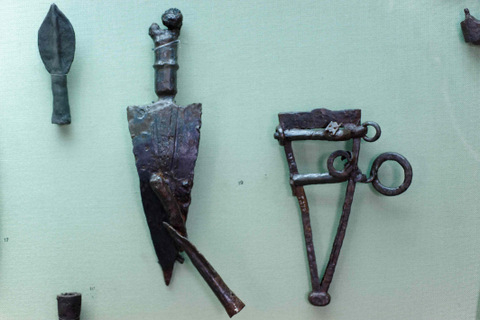 iron.
iron.
The maritime exploitation of the Mediterranean coast became systematic in the middle of the first millennium BC, thanks to the Phoenicians and Punic Phoenicians, who arrived in what is now Andalucía.
Over time a powerful fish salting industry grew up and the famous regional sauces were created. The Iberians knew these products, and among the typical Iberian crockery it is common to find ceramic plates with a central bowl where the sauce would be deposited. Some of these plates are even decorated with fish designs.
Archaeological relics and remains, and documented history
There are numerous pieces of evidence which give us clues as to the habits of the Iberians regarding dress, footwear, decoration and other accessories. Firstly, the remains of objects made out of plant and animal origin have been found among grave goods. These include linen, which was used to make tunics and delicate clothes, wool for blankets and winter clothing, leather, which is found in boots, belts, caps and the sheaths for knives and swords, and esparto grass, which was used to make string, rope, baskets and footwear.
There are also written sources of information. According to classical historians, the women would have been in charge of making the cloth used by their families, working in small workshops next to the front doors of their homes since this was where there was most light by which to see their work. Ephorus (a Greek historian) even tells us that in some communities there were annual festivals to show off the work of the whole previous year, with the winner of the show receiving a prize from the (all male) jury.
The grave goods of women
This observation on the part of Ephorus seems to be corroborated by the archaeological findings, since in the graves of women it is common to find tools used in the process of spinning, such as spindles and counterweights. The counterweight makes the spinning movements of the spindle more uniform, allowing the production of a finer thread, which was more valuable and more widely appreciated. Some weights have also been found, and it is believed they would have been used for weaving cloth, along with needles fashioned in bronze and iron.
Clothing
Our information regarding how the Iberians dressed and the ornaments they wore comes from the depictions of humans both in sculptures and the designs used to decorate ceramics. There is a wide variety, but the attire most often seen on women is two long tunics (although on special occasions a more sumptuous third one was added), a veil and a cloak. The mens tunics could be long or short, and were held in at the waist by a belt. Sometimes they wore a cloak, or even two.
As for ornaments and accessories, some of which have been found not only in pictorial and sculptural representation but among the grave goods discovered, they were made mainly out of gold, silver and bronze, and were sometimes inset with precious stones or coloured glass. Among feminine ornaments found we can include tiaras and headbands with pendants for the forehead, earrings, necklaces, bracelets and rings, while men wore small earrings, neck-rings, rings, bracelets and belt buckles or brooches. Fibulae (the Iberian precursor of the safety pin) were used to support the different items of clothing.
Material culture
Apart from weapons, tools and decorative objects fashioned from various materials (bone, wood and glass, among others) the key technique used by the Iberians was ceramics.
Evidence of contact with other cultures is clearly visible as the centuries pass, particularly in ceramic production, the use of the potters wheel, introduced by the Phoenicians, the which gave the opportunity for greater speed and precision in the production of articles and the clear evidence of trading contact with the Greeks and Romans. The types of ceramics produced are manifold and various, but they do share some features in common: decorative patterns were in red and brown, and generally consisted of geometrical shapes, although they later expanded to include motifs based on plants, animals and human beings. The articles can be broadly categorized as falling into four groups: storage, domestic crockery, cooking ceramics and sundry decorative items.
As well as ceramics we frequently find in Iberian sites items which are clearly imported from the Greek and oriental world. Such was the impact of these products that even in the smallest, most isolated villages there are at least some examples of this phenomenon, and it seems that they not only bought the articles but also imitated them, adapting them to their own production techniques and decorative tastes.
There are many superb examples of Iberian ceramics in the museums across the region, the most noteworthy being the Cigarralejo Museum at Mula and the archaeological Museum in Murcia.Click Archaeological museum Murcia.





